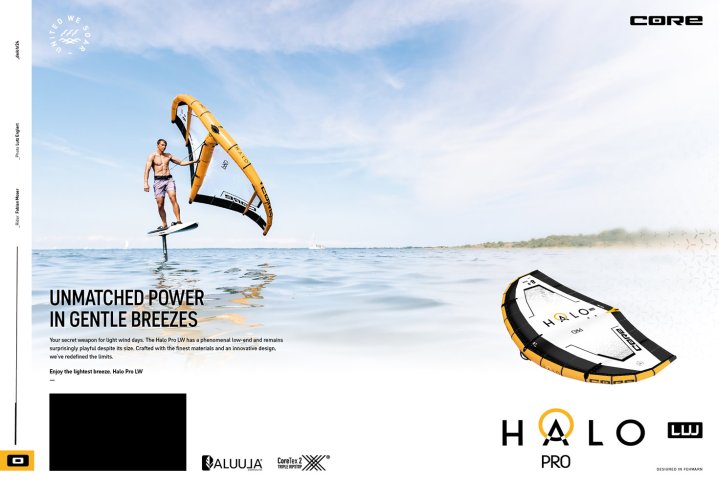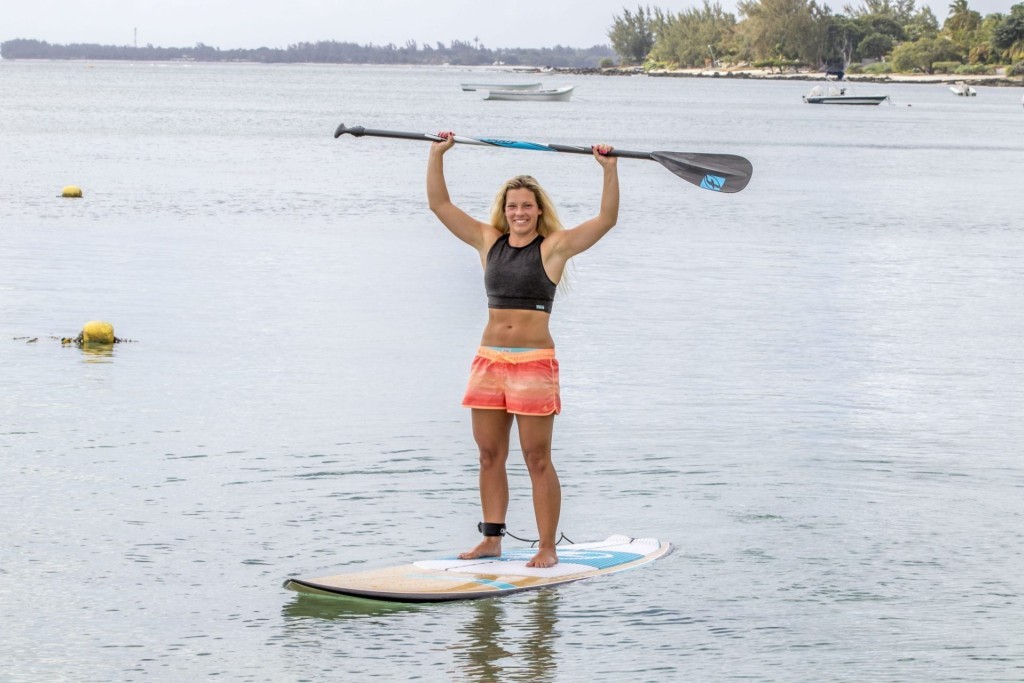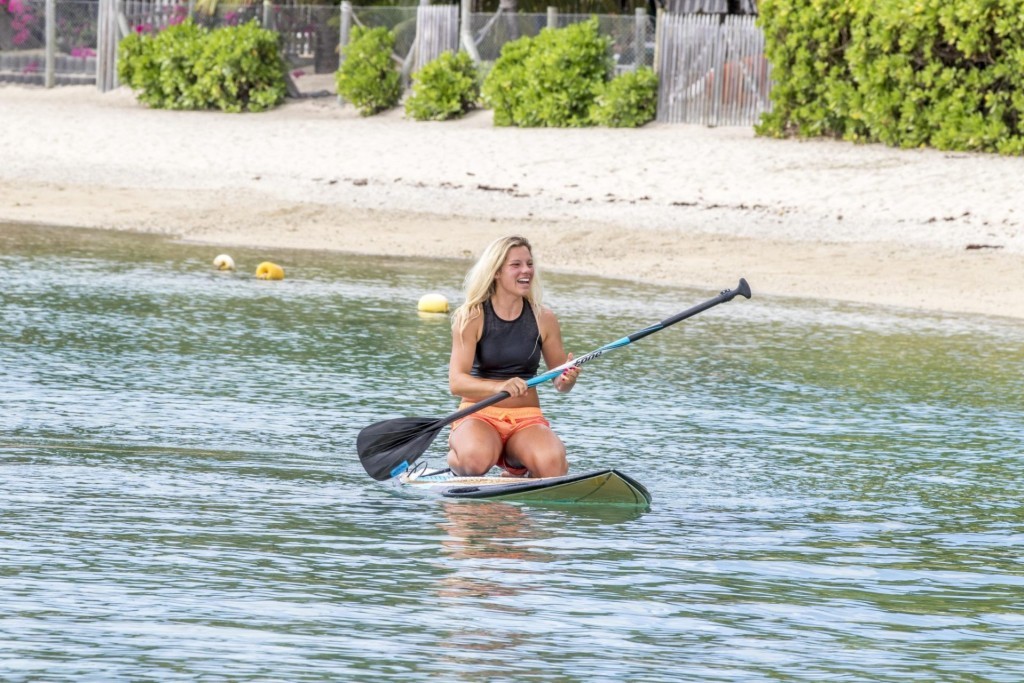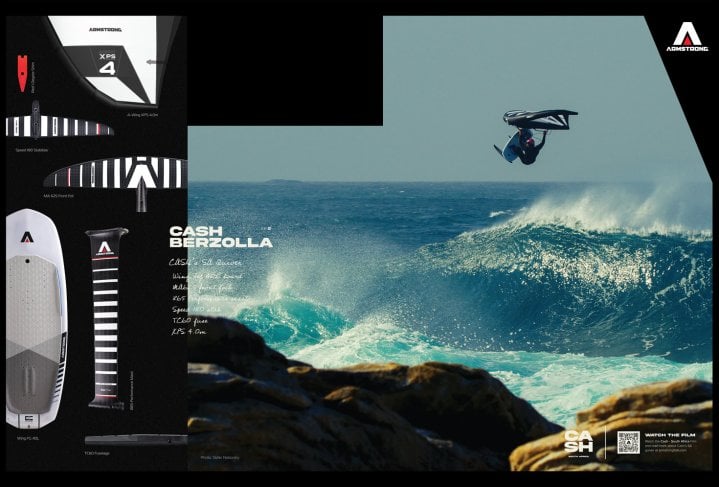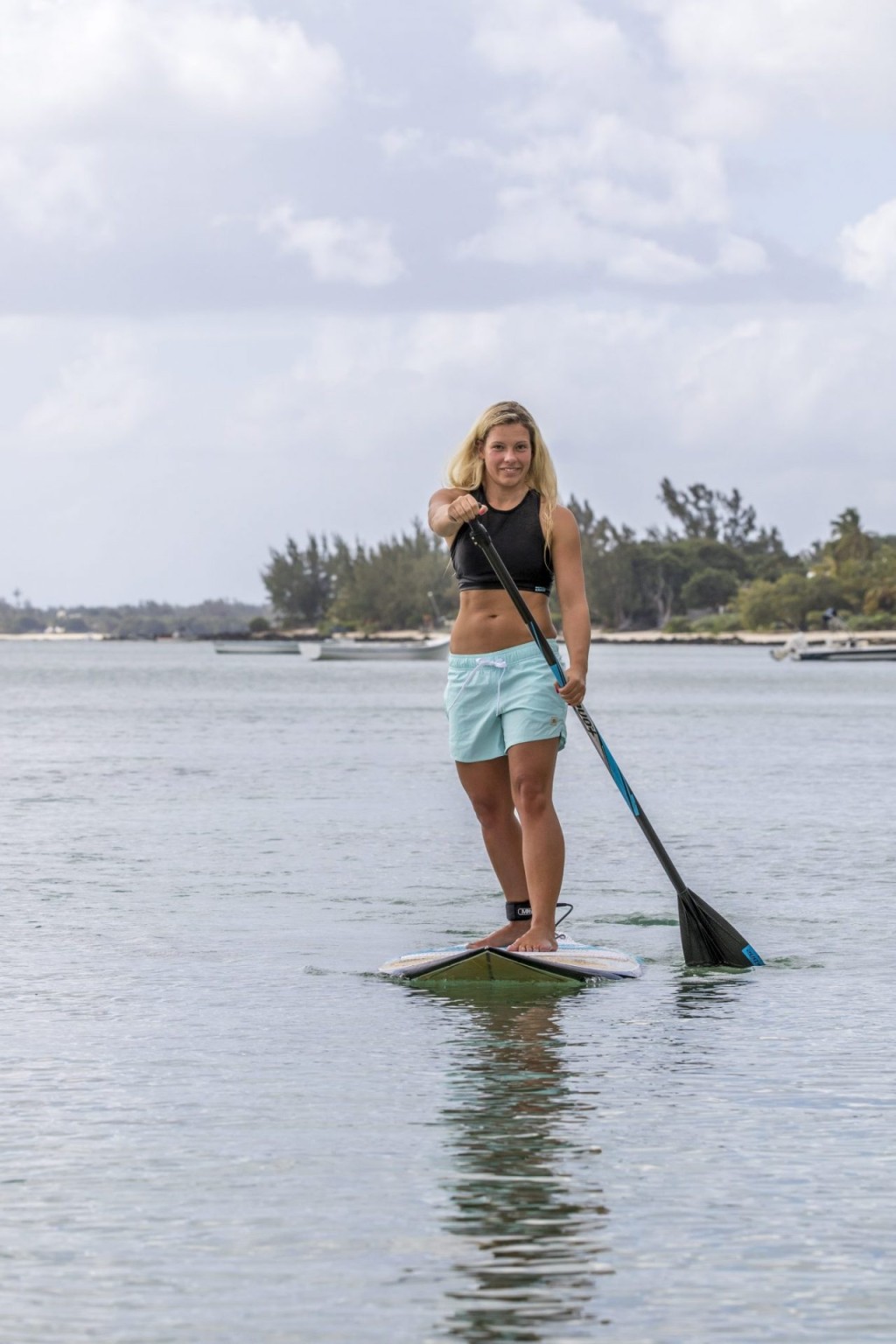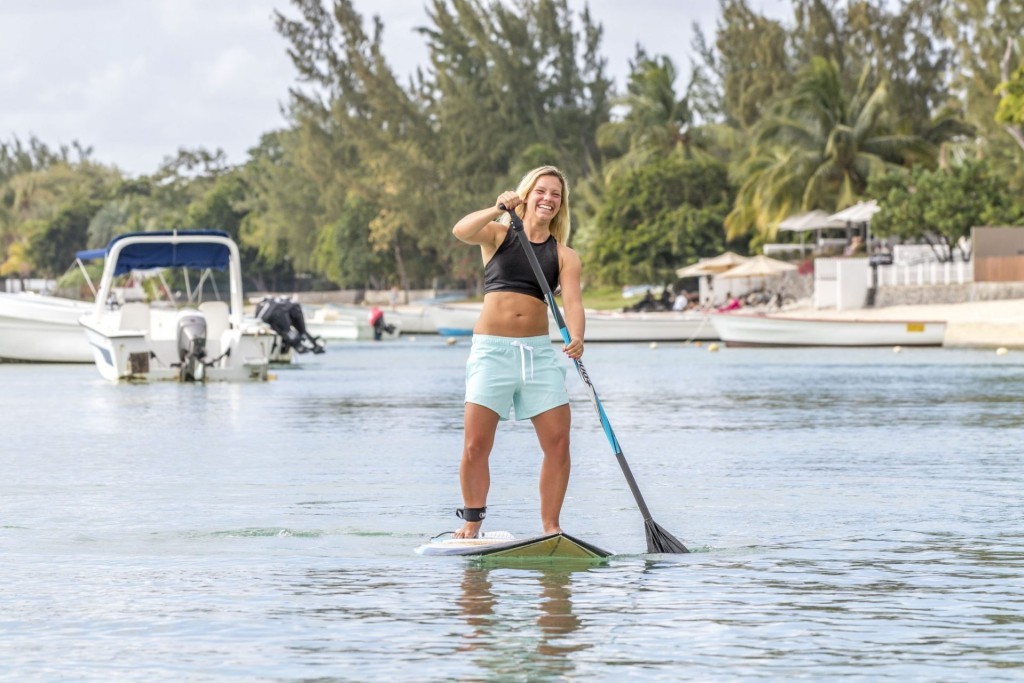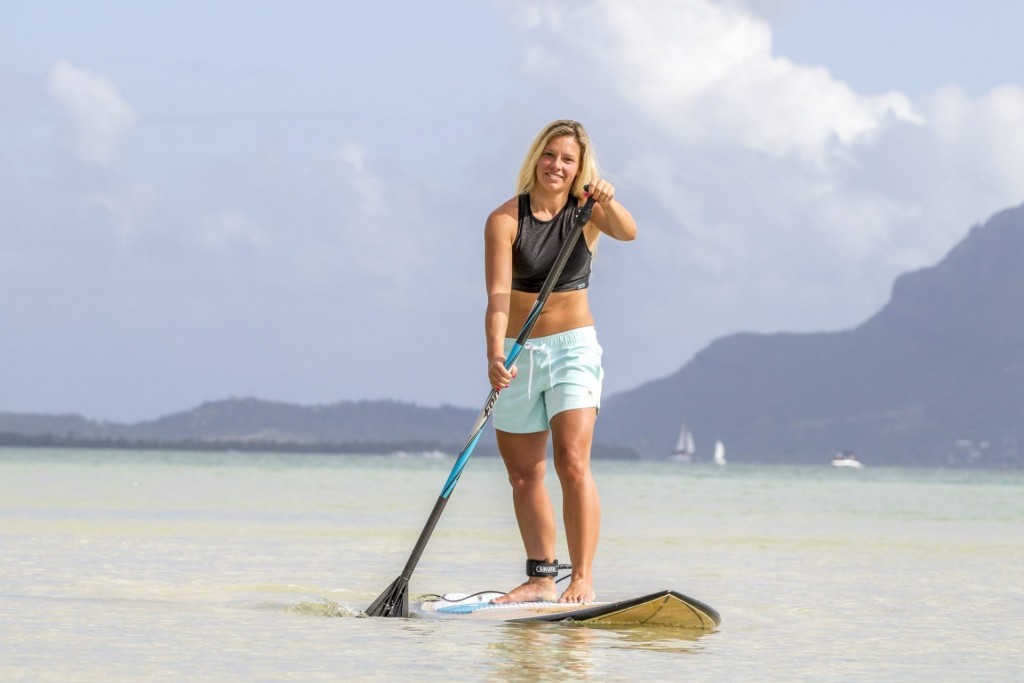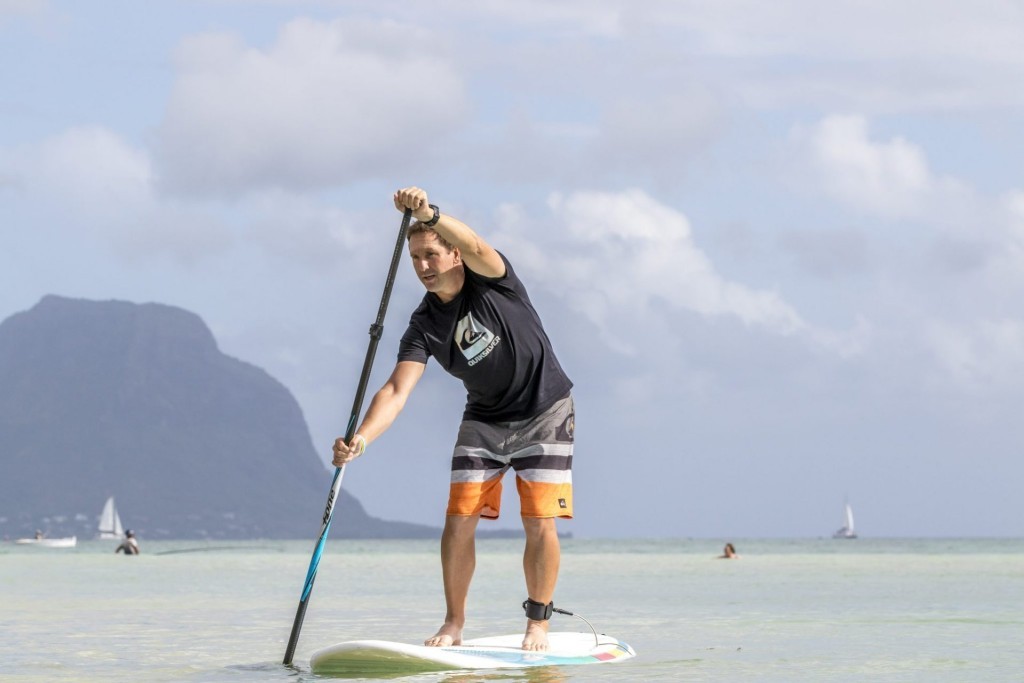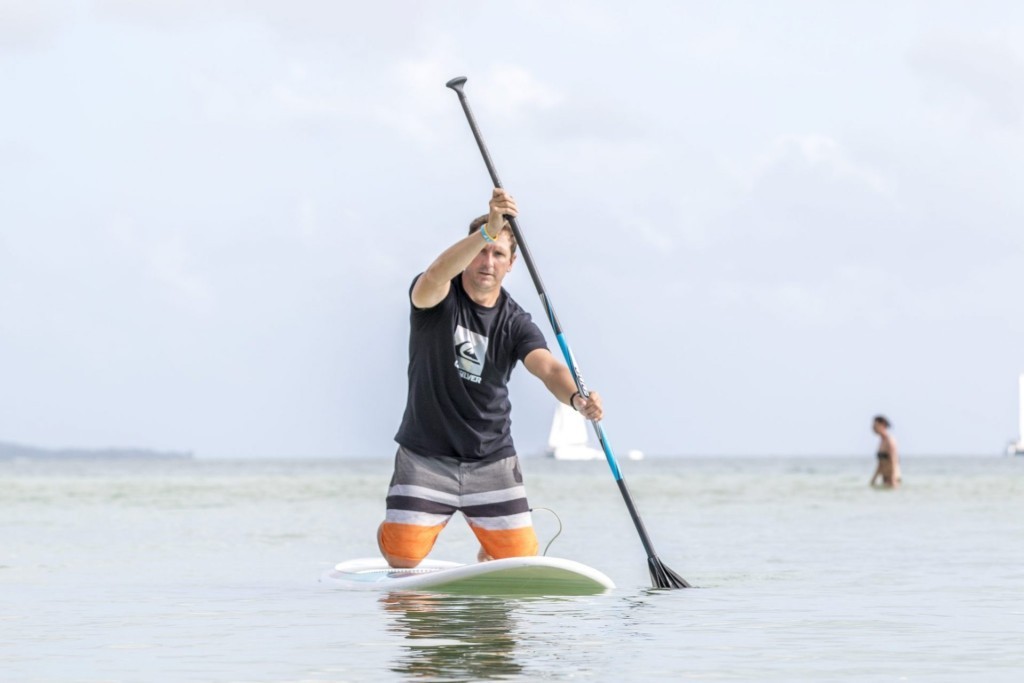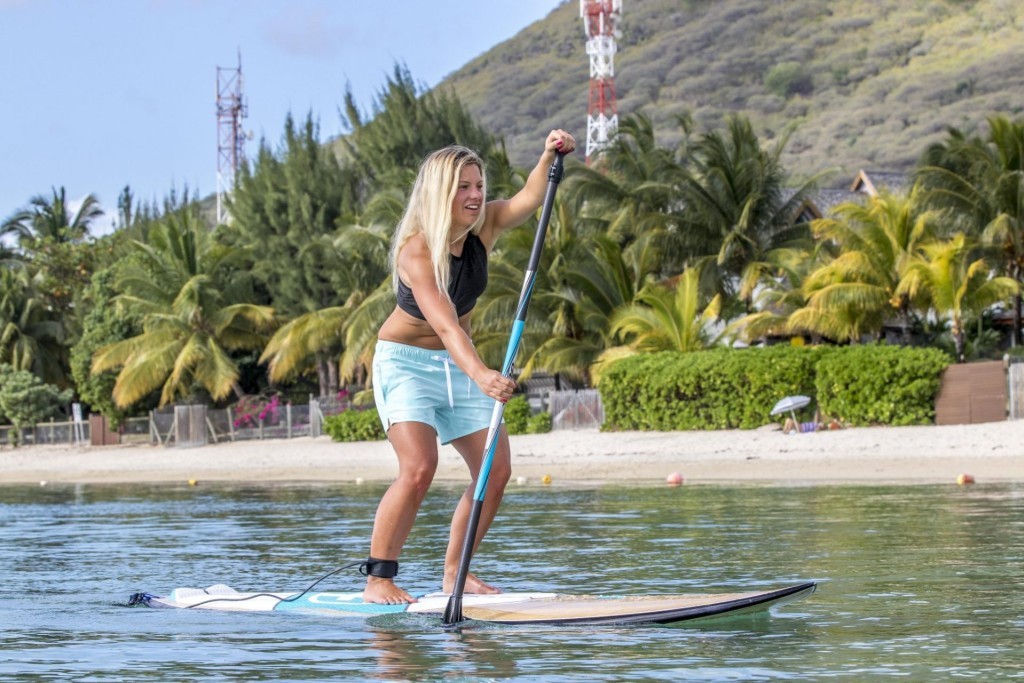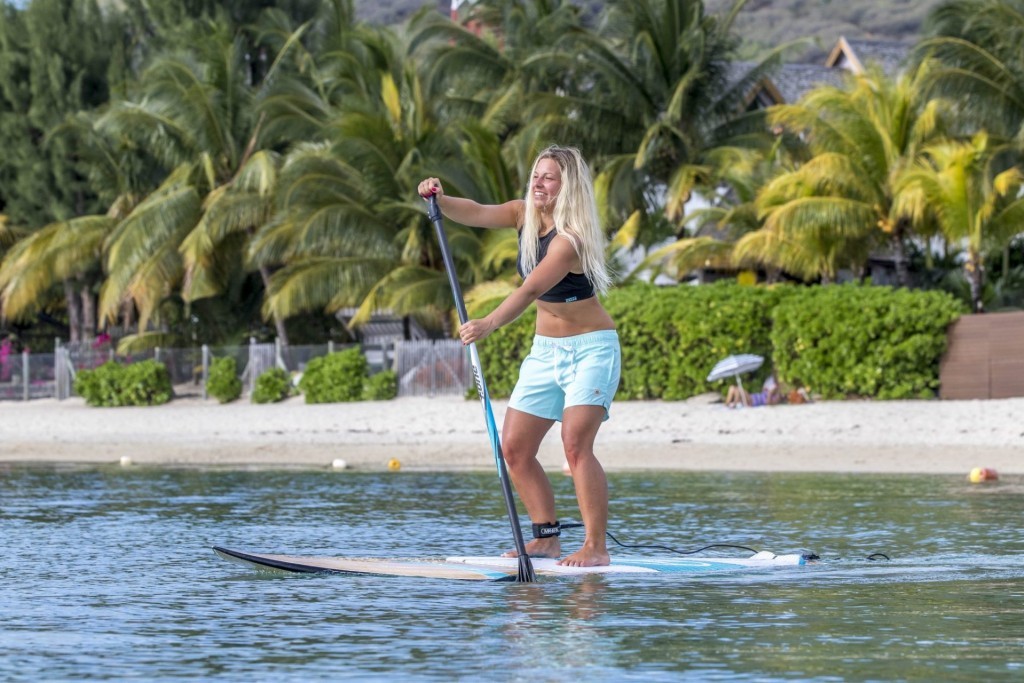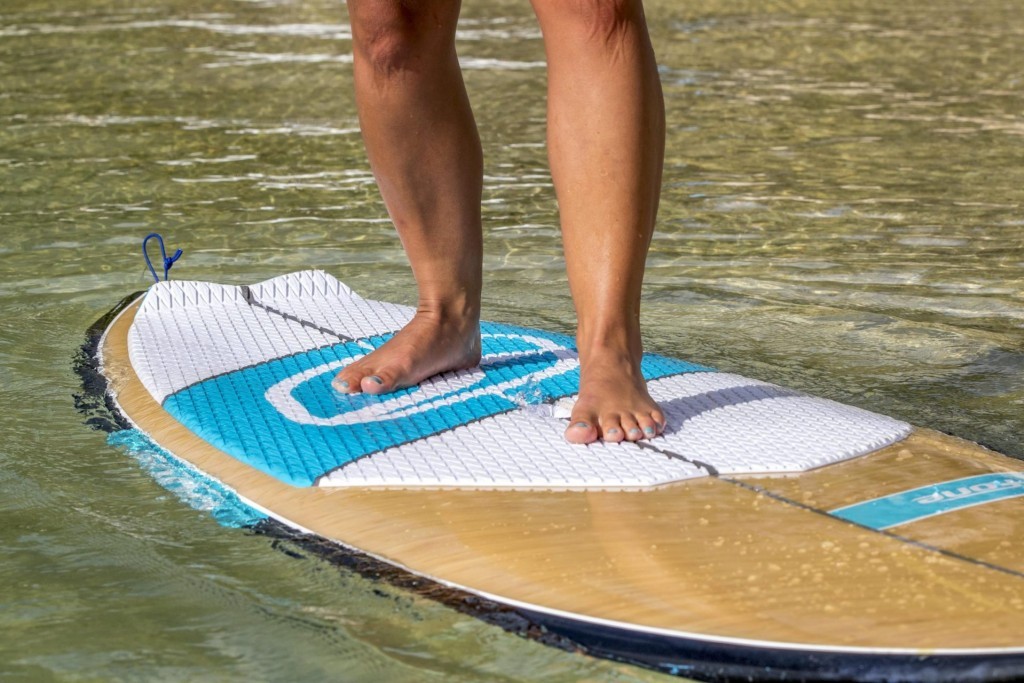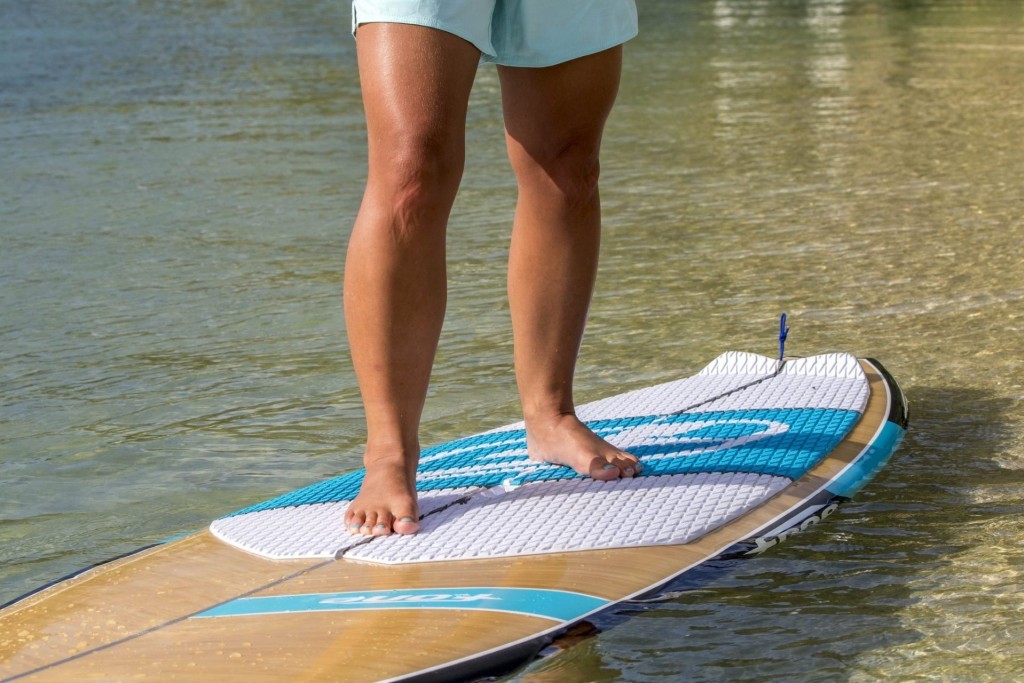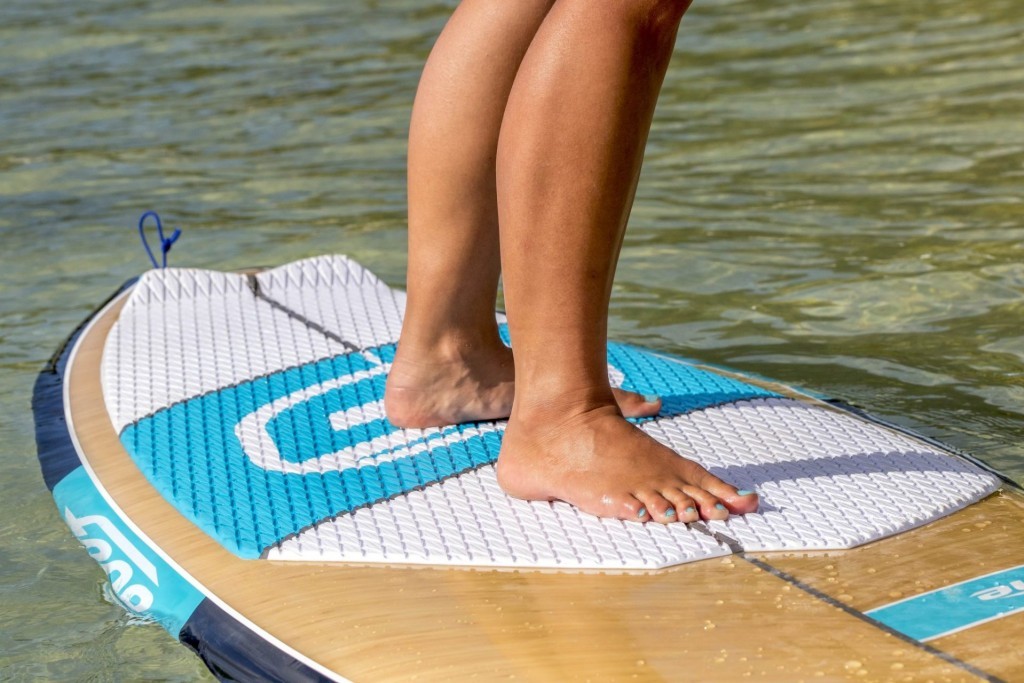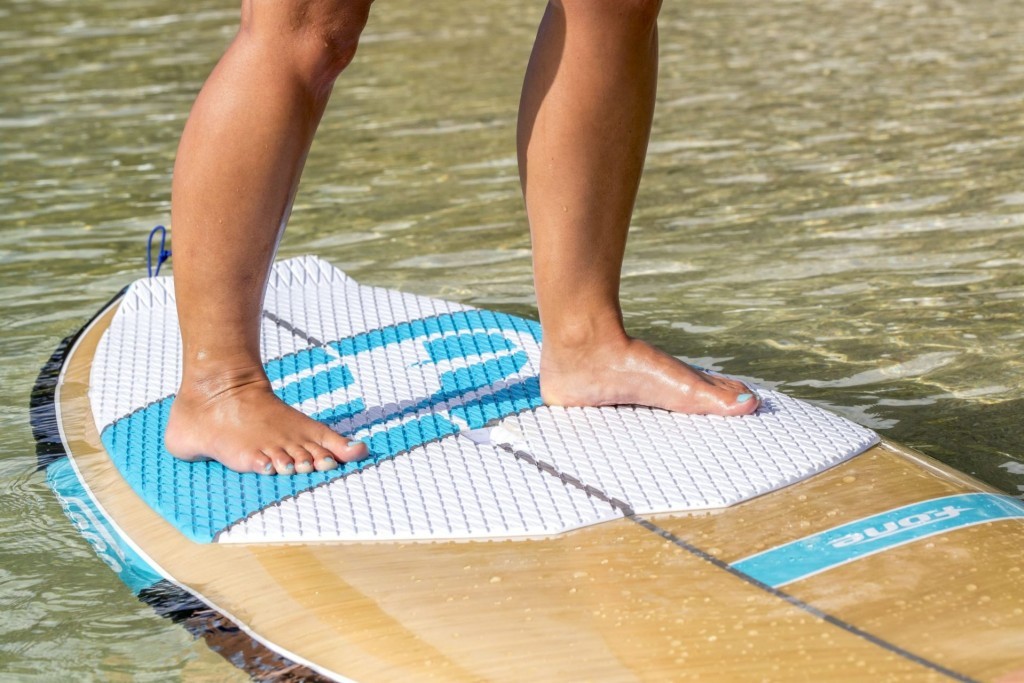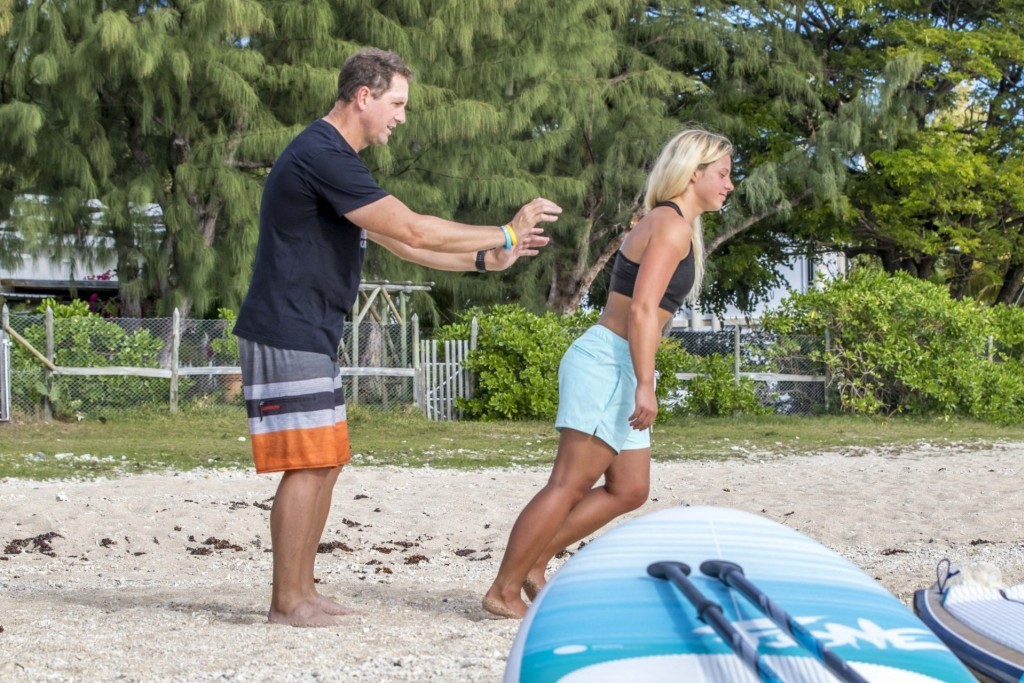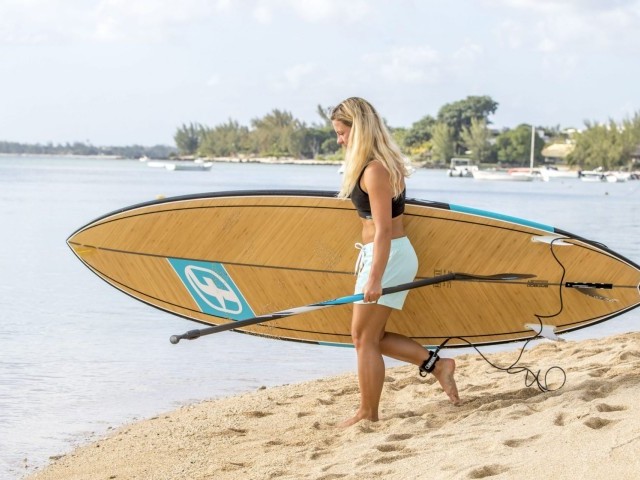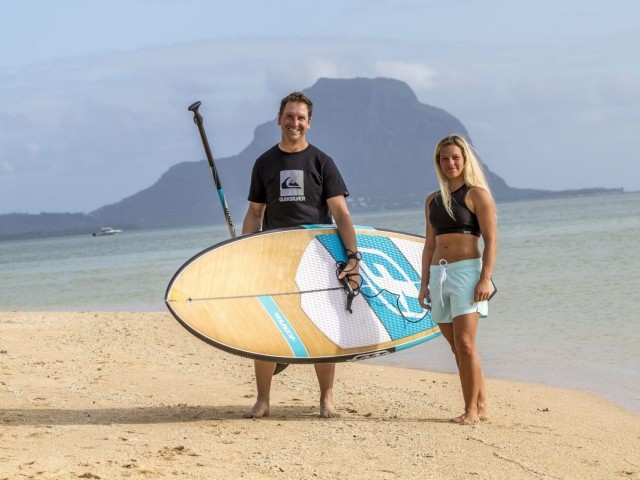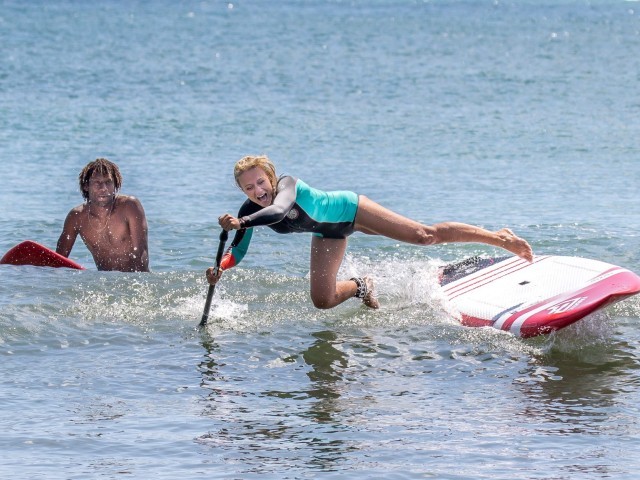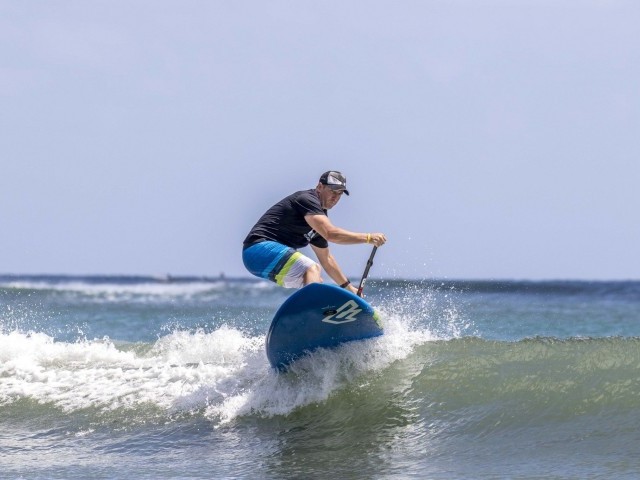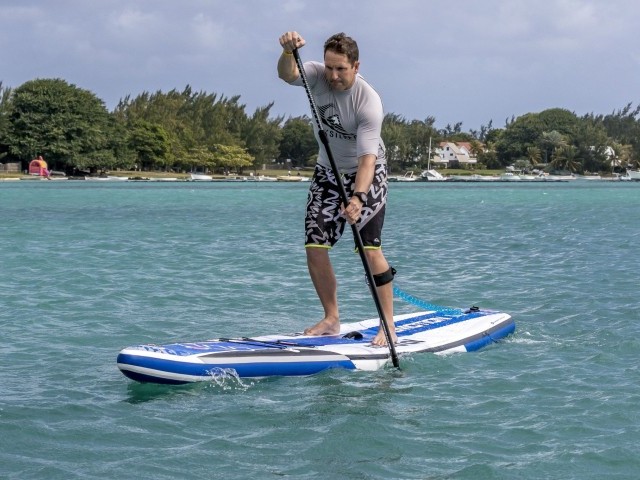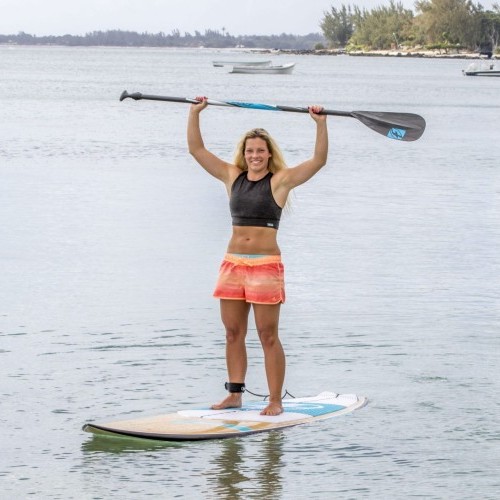
Balance Control and Efficiency
Technique / Beginner
Perfecting Stance and board position.
Comfort and feeling at ease on your board is the basis for stability, control and efficient paddling.
If you do not feel comfortable on your board, you'll find your body is always making minor adjustments and shifts in body position. This constant movement will not only be disrupting; you won't be able to paddle effectively or be in a position to maintain stamina for an extended period. You'll be wasting energy that could better be spent paddling, and you won't last long on the water.
Therefore comfort, as with most things in life, is essential in maintaining and certainly, prolonging not only your sessions but also your paddling efficiency. As a result, we will begin this months technique article dealing with the basics related to comfort on you board. Namely stance, better board positioning and how to position yourself more effectively to be a more efficient paddler.
For those of you who have engaged in or have a surfing, skateboarding or snowboarding background and now find yourselves migrating to stand up paddle boarding, stance is something that you are already very accustomed to. You should be quite competent in adopting a “natural/regular stance”, leading with the left foot forward) or “goofy stance”, leading with the right foot forward as introduced in previous issues.
Advanced riders hailing from a kitesurfing or windsurfing background will naturally benefit from the ability to ride in preferred stance or “switch stance”. The ability to ride with the "wrong foot forward" with similar or equal comfort and ability. “Switch stance” and the ability to elect either position with equal comfort and ability presents a significant benefit in maintaining efficiency. It allows the rider to simply switch feet in order to rest and recover muscles and vastly improve overall longevity over muscle fatigue experienced in paddling in one position for extended periods of time.
Having addressed basic stance, the additional factors to consider are the type of paddling you intend on engaging in, be it flat-water, down-winders, surf, foil etc.. Perhaps most crucially though, the varying conditions that you might encounter while out on the water should also be considered. Given the fact that most bodies of water are affected by an assortment of variables, wind, current and tides, for example, your stance has to be varied and customised to best contend with the elements that present themselves.
Experience and time on the water allow you to become more cognizant of these minor nuances and how to read them – and most importantly, how to respond and react accordingly.
Basic “Neutral” stance
Feet together – with either big toes close together or heels close together - also identified as “square” stance presents the position that will best suit flat and glassy conditions as it restricts or limits lateral hip movements when having to deal with choppy conditions.
Natural Stance
Natural stance, not to be confused with “Neutral stance”, is best illustrated by the widening of the stance while still in the neutral position. This allows the feet to be positioned on either side of the stringer of the board, closer towards the board rails. As opposed to feet together touching the stringer itself or based in the middle of the board. This wider stance position gives you far more control over the lateral forces you will feel as the board wobbles from side to side. It is perfect for rough or choppy conditions where you need more control.
Side Stance
This is a simple derivative of natural stance – by simply, keeping your feet square and angling your toes either to the left or to the right - it presents a favourable position to deal with wind direction, currents or chop from a side on position.
Surf Stance AKA Off-Set Stance
This presents an excellent all-around stance in paddling and is best suited to dealing with challenging conditions in which waves, swell and chop play a large role. We covered this in our wave paddling technique feature; the off-set stance is best suited for paddling out through the surf. Natural stances do not provide adequate control over the forces created by waves and white water that lift the nose of the board. This results in the board accelerating upwards and impacting your body or face. The surf stance allows your leading foot to limit this explosive force by absorbing and restricting the potential lift energy that results.
T-Stance
For those of you who are progressing onto foils - either in wave riding or for down-winder riding, you will be very familiar with this stance because your body position needs to be “centred” along the stringer of the board. Any slight deviation is going to result in the foil “glancing to the right or the left, depending on the amount of heel/toe bias to either side of the board tail. The back foot provides the direction of drive and steering with the front foot controlling the levels of pitch and lift through both absorption and restriction of vertical movement.
For many paddlers who are struggling to come to terms with balance on their boards, this is ultimately a result of an inability to interpret the movement of the board under their feet and to counter-act this action through intuitive body positioning and stance.
The “my board is too unstable” phrase is all too common; it is often a case where the riders associate their instability with the board and don’t, more appropriately, direct the blame towards themselves.
Ultimately, this is a stability-related problem and can be simply addressed by making better use of all core muscle groups (arms, shoulders, torso, hips, legs and foot stance) in the most appropriate way to counter-act the presented conditions and board movements.
Reaction and response time also play a crucial role and generally individuals who benefit from a good sense of balance (to begin with) and understand (or who have experienced) the subtle similarities in body positioning through other disciplines – and can react in a split-second timing will certainly benefit from a easier learning curve and opposed to those who have not yet grasped a complete understanding these concepts.
Various balancing devices such as “Indo-boards” and “Pilates balls” (NO - they are certainly not - just for the ladies) present a very good basis for core strengthening, confidence building and balance refining; they are ideally suited to stand-up paddle boarding.
In considering the majority of balance related sports, momentum is generally acknowledged, to be your friend! To use a simple example, consider trying to remain stationary on a mountain bike in one place (by using the brakes and your arms to counter steer your front wheel to maintain equilibrium and ultimately balance. It takes time to understand the simple mechanics, but once achieved it’s relatively easy to do.
It is much easier, however, to simply begin pedalling and benefit from the equilibrium forces that forward momentum brings. To further aid this process in cycling, the rider is encouraged to keep their head up and look forwards and not at their feet. The very same principle applies to stand up paddle boarding – keep your head focused on the water ahead of you and draw a few paddle strokes to gain composure and ultimately, through practice and persistence balance will result.
Your initial balance is complemented by the addition of your paddle, which actually, further aids balance through its cyclical motion and resulting rotational forces that are generated. As was the case, in the mountain biking example – in which equilibrium is gained through both peddling (a cyclical motion) and the resulting rotational effect of both wheels.
The challenge that presents itself for the majority of first-time paddlers is that they have to focus attention on being able to balance on their board first and then draw a paddle stroke, which can potentially disrupt this focus and result in lateral forces (by moving the paddle on either side of the board) creating instability. These forces need to be counteracted appropriately through compensative body positioning (lean) and the application of counter-foot pressure on the opposing side of the board to the paddle stroke. As mentioned in previous issues, by simply lowering your centre of gravity (kneeling down) the amount of potential “lateral sway” can be greatly reduced to allow the first-time paddler with an opportunity to grasp the forces and work and the technique that is ultimately required to compensate for it.
By lowering your centre of gravity, you are actually expanding (increasing) the distance that your centre of gravity can comfortably travel before crossing the support base “threshold” or proverbial “point of no return”, which results in a significant disruption of equilibrium with you simply - falling over.
An interesting note is that your paddling technique also affects this equilibrium. Paddling “loose and high” – exaggerated movements through your shoulders by lifting your arms elevates your centre of gravity – resulting in a “top heavy” effect whereas “low and tight” controlled power strokes by keeping your arms close your body will increase your overall stability.
The theoretical point that passes vertically through us is often referred to as the “line of gravity” and dependent on the activity that we are performing, if we remain composed and within the limitations of this “line” our balance is maintained and we simply remain on our feet. The height and weight of a paddler play an important role – in addition to the selection of an appropriate paddle board that that takes these variables into due consideration.
The volume of a board is there for a reason, and it will only remain buoyant and stable within certain parameters. If you do not consider the volume of your board in relation to your mass – stand up paddle boarding is going to prove to be a very frustrating lifestyle choice indeed. Inevitably a “tipping point” will be reached in which your body cannot physically support itself through “countermeasures” and compensating movements, and you simply lose complete balance and fall over.
The benefit with stand-up paddle boarding is the fact that we have a paddle in our hands, which effectively provides a “third point” of contact with the water. For those of you who rock-climb, the fundamental basis for effective scrambling and bouldering is to maintain three points of contact at all times is it presents stability, control and safety over the process involved.
The same applies to stand up paddle boarding, the paddle head, as it is drawn through the water, introduces a counter-force which compensates for the resulting “forward lean” of the paddler. In some cases, this can move the paddler forward of their hypothetical “line of balance” threshold, and if it were not for their stable base of support on the board (due to stance and the paddle pressure), they would simply fall over.
As a result, balance can be achieved through two key means - either as a stationary means, by standing still with your legs placed at normal hip width, referred to as “static posture”. The body is not moving and distorting or disrupting its equilibrium and line of gravity meaning we can balance normally with little input and maximise our energy for paddling.
Alternatively, as per the prior description above, we can balance through counter forces that are ultimately complimentary in eradicating the instability. This is commonly referred to as “dynamic posture” the body has to interpret the forces at play and respond through counter-intuitive movements to restore composure and maintain balance.
Always be cognizant of the fact that – the wider your “square stance on the board” the more exaggerated the counter movements will be required to compensate.
Depending on the conditions that present themselves, the level of comfort and experience of the paddler - these two essential balance techniques can be simply “accessed when required” to effectively reduce fatigue and increase performance and efficiencies. Simple logic will dictate that a person who can limit their “unnecessary exertion” through intensive balance related moments is going to ultimately paddle more efficiently, resulting in considerable improvements associated with forward momentum, increased levels of resulting balance, stability and overall speed.
Let’s consider a scientific approach for a moment – as, in physics, mass is a property of a physical body. It is the measure of an object's resistance to acceleration, a change in its state of motion when a net force is applied.
Mass is not the same as weight, even though mass is often determined by measuring the object's weight using a spring scale, rather than comparing it directly with known masses.
An object on the Moon would weigh less than it does on Earth because of the lower gravity, but it would still have the same mass. This is because weight is a force, while mass is the property that, along with gravity, determines the strength of this force. The result of this is that a person with a higher mass (gravity combined with weight) will exert a greater force, in turn, resulting in a greater counter-force by the water pressure resisting back – ultimately providing stability and improved balance.
In essence, a heavier paddle may attain better stability and balance on a certain board opposed to a lighter person due to the counteracting downward force exerted by the mass of the person on the board in relation to the reciprocal force exerted by the water tension pressing back on the board.
Let's consider Einstein’s third law of motion:
Action and reaction forces comprise the subject of Newton's third law of motion. Formally stated, Newton's third law is: For every action, there is an equal and opposite reaction. The statement means that in every interaction, there is a pair of forces acting on the two interacting objects – this quintessentially sums up the point that we are trying to illustrate rather succinctly.
How to determine your preferred stance?
This is a question that often surfaces with first-time board users – am I “natural/regular” or “Goofy”.
Snowboarders make use of a very simple technique that works relatively well and doesn’t require any additional equipment. Have the person in question – close their eyes and simply turn them around in one spot. After a few disorientating turns “push them” gently off-balance without warning. The first foot that they place (to prevent themselves falling over) is in most instances - their more “preferred” / leading foot. If it’s your left foot, you are “regular/natural” footed, and this should be your leading foot, if your right foot went forwards then you are “goofy” footed, and your right foot will be the lead.
This technique is not absolutely “foolproof” so, inevitably - practice will certainly prove to make perfect, and you will gravitate to a position in which you feel “more” comfortable over the other. As we discussed in wave paddling, once you have identified your stance, fix you leash to your trailing leg as it then - simply trails in the water behind your board and not on the deck. If it was attached to your front leg, it could potentially cause a snagging/ tripping hindrance.
As always, time on the water, practice and persistence will certainly - win the day!
Until next time, paddle safely and enjoy it - tropical sunshine and smiles to you all!
This technique article was in Issue 5 of Tonic Mag.
Related
By Bryn James
Bryn is a highly respected waterman who is very popular amongst his peers. Having been the competition director for the longest running multi sports events (Jeep Apparel South Coast Carnival in South Africa), he continues to be a fierce competitor in professional SUP and Kitesurfing events, spanning 15 years. His affinity for the sea has no bounds and he is perpetually motivated to share positive ocean experiences with everyone he meets!




